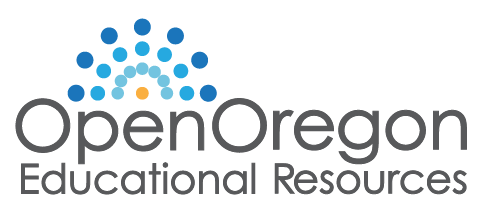This post was contributed by Halima Bibi, GE/Project manager, University of Oregon.
This project began when Keli Yerian, faculty member in the Department of Linguistics at University of Oregon, learned about open pedagogy in an Open Oregon Course Redesign Sprint in 2023. Yerian decided to invite students to write an openly licensed textbook for LING 144, Learning How to Learn Languages. From January to September 2024, linguistics graduate student Bibi Halima and a team of undergrads—Addy Orsi, Abhay Pawar, Logan Fisher, Faith Adler, and Cameron Keaton—wrote and developed the textbook, Learning How to Learn Languages, under the guidance of Dr. Yerian. The project received funding support from both internal and external grants including Open Oregon Educational Resources, the Williams Fund and the CAS dean’s office. The book is now available to the public, and is being used by current and future students in LING 144. This course enrolls 70-100 students each fall and spring term, saving an estimated $10,000 per class of 100 students.
Read more in a University of Oregon article about our project: Students make major contribution to open education resource in linguistics.
What is open pedagogy?
Open pedagogy is a learner-centered approach to teaching in higher education. In a world with widespread access to the internet where knowledge can (and should) be shared freely, open pedagogy plays a transformative role for both students and educators. We define it as an invitation for students to co-create and contribute to the field of knowledge by publishing openly licensed content, which is more personalized, sustainable, and dynamic. This definition is informed by Robin DeRosa and Rajiv Jhangiani’s writing on Open Pedagogy.
Big picture and insights
We started the project with a high level of structure, clear strategies, and defined roles, similar to those in any regular course development project. Our process turned out to be less linear and more cyclical than we anticipated. For example, the five students initially wanted to divide up the first five chapters to author individually. It became clear after several weeks, however, that a different structure would work better to capitalize on students’ strengths. Instead of five, three students continued to write, while one began illustrating the whole book and the other focused on multimedia elements.
The shifting of roles in this kind of project brought a sense of uncertainty. It raised new questions and concerns about the potential risks of not being able to complete the project or publishing something that does not meet academic expectations.
That’s where metacognition came in. When we look at our big picture, we can see the flexibility in our strategies made the project a huge success. Below we share three takeaways of what we learned from our journey with open education and open pedagogy.
1. It is more about the process and less about the product
Sure, the final product is important in a writing-textbook project, but what really matters is how students figure out their interests and invest in synthesizing them. When our students have agency and freedom to design their own tasks and specialize in roles based on their interests, they become motivated and express their creativity in ways that they personally relate to. This approach is about more than just meeting a deadline and finishing a product. It is the metacognitive process of planning, implementing, reflecting, and readjusting.
For example, one of our students decided to specialize in multimedia elements such as videos, filming, and editing; the process for this student not only involved submitting final videos but also first developing literacy in filming equipment, creating storyboards, and negotiating with supervisors and team members to execute the plan. It was all about going through the process again and again refining each step along the way.
2. Advancing open learning together
By prioritizing students’ interests and involvement in the process over the product, we as educators were also required to see our roles differently: as true team members. We recommend educators and students to approach open pedagogy with sheer openness to learn, unlearn, and relearn. It may sound like an enormous shift in perspective all at once, but it is not! Open pedagogy does not require faculty and educators to discredit their expertise either. In fact, the process requires educators to become more fluid in their roles and provide alternatives to students if the original plan and structure needs revision.
For example, when our students shifted into different roles, we all maintained transparency and collaborated as learners to support each other. Each page of this book is a collaborative effort. This allowed our project materials to evolve beyond what a purely educator-led initiative would have created. On the one hand it required an evolution in our pedagogy, while on the other it led students to become more autonomous and self-directed in their learning experience.
3. Increasing access and affordability with open education
This project is deeply rooted in the values of social justice and increases access to learning materials. Higher education in the United States on one hand unlocks the door to future full of opportunities but on the other hand it can be really expensive. Many students depend on student loan debt just to pay for tuition and textbooks. In this context, open education is not only challenging traditional textbook publishing but also increasing affordability as this open-access textbook has the potential to save $10,000 for each class of 100 students.
If we believe that education is a basic human right, then making textbooks open and free of cost is a crucial step toward protecting that right.
